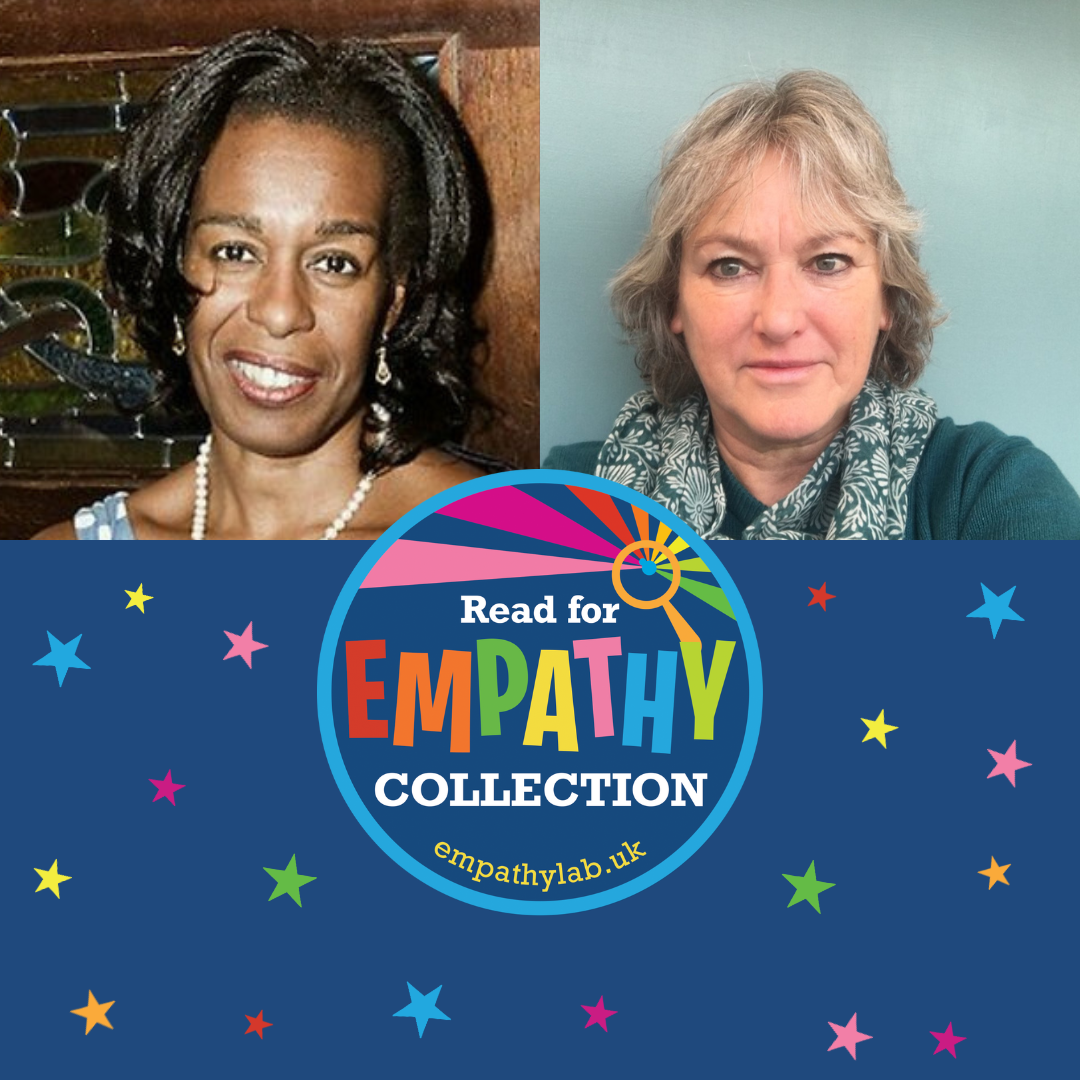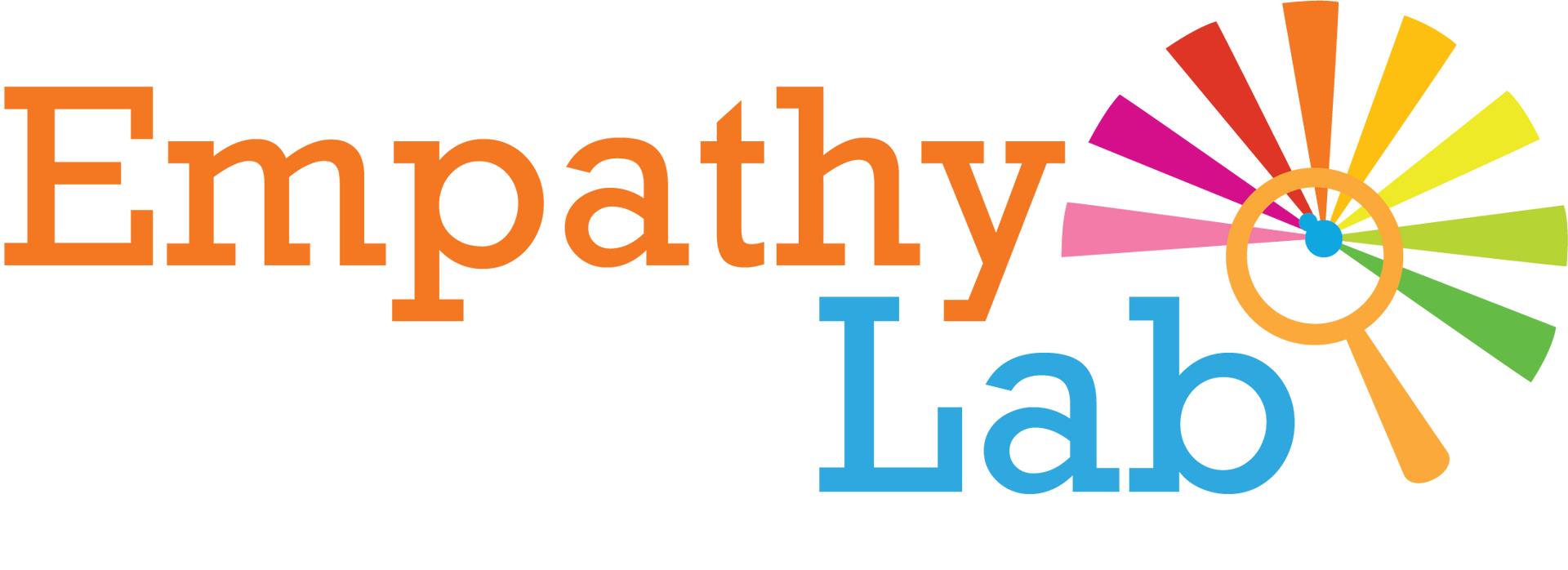Librarian Judges on the 2022 collection
- By EmpathyLab
- •
- 04 Feb, 2022
- •
Reflections on our new collection and how it can be used in libraries

We’re proud to include a number of librarians on our Read For Empathy judging panel. Here four of them reflect on the 2022 collection.
This year’s Read for Empathy collection for children and young people provides an ideal road map for developing improved empathetic awareness of current events both at home and abroad. Themes in this year’s collection very much connect with issues in the news and require a response, a new understanding, and a call to arms.
The pandemic spotlighted issues such as loneliness, isolation, depression, and poverty. Providing enough food became a struggle for many families as parents struggled with furlough and lost jobs. Food banks were much in demand. Stress levels were raised too with trying to educate children through home schooling, and many struggling with limited access to internet and IT devices. The plight and suffering of Afghan people was another very real indicator of the horrors of war and life for refugees.
In response to the news, this list of books asks for kindness, understanding, and support, and questions how we can make a difference. It offers tools and resources from EmpathyLab’s website that can help with rebuilding struggling communities, schools, and community settings.
The list takes you into territory that can be demanding. The novels are brave, unflinching, sad, sorrowful, traumatic and yet for many they also provide a journey to reconciliation, hope, learning and happiness. The collections examine a wide range of topical themes including racism, eating disorders, bullying, the plight of refugees, LGBTQ+ challenges, learning difficulties, disability issues, environmental concerns, family life changes and more.
A number of books in the collection inform the current discussion around the Black Lives Matter movement. Punching the Air explores the wrongful imprisonment of a young African American man. Cane Warriors looks at the enslaved people’s uprising of 1760 in Jamaica, and Queen of Freedom tells the tale of another figure pivotal in the fight against slavery. The brutality and harshness faced by the protagonists in these novels drives these messages home. Black and British fills in the Black history in the UK that children may not know about.
The Crossing addresses the ongoing refugee crisis with a stark, unflinching and no holds barred story of the journey to a better life. It is moving and sorrowful, twinned with a story about bereavement and the damage meted out to new refugee arrivals. It makes us look deep within ourselves, to value our blessings and to support those without.
When the World Was Ours examines the impact of WWII through three friendships, across political divides. The warmth, hopes and dreams at the beginning disintegrate as the struggle for survival affects all three. It’s a compulsive and heart rendering read. The reader is with the young people at every step hoping they live. After the War picks up the story for those Jews who managed to survive. It’s a quietly moving story told with honesty and dignity, never shying away from the damaging effects of war on survivors and their determination to live. These stories reflect the horror of war, mirrored in many countries around the world and deepen readers’ understanding of why inhabitants flee and become refugees.
Wrecked chronicles a blistering toxic relationship and its destructive influences. So often it is the quiet personalities with low confidence who become victims. It is good to see the story told from a male angle. The book contains many lessons for young people about valuing yourself, and recognising warning signs. It’s a bombshell of a story, a compulsive read, helping young people learn about discovering oneself and growing up.
The novel In the Key of Code explores making new friends at a new schools, using music to explore themes and metaphors. The story highlights the anxieties, loneliness and bullying in the protagonist’s journey. There is much to empathise with and it is lovely to see a friendship develop between two girls where cultural differences play no part. Little Light deals with the effects of a family break up, homelessness and bullying at school. It has a happy outcome and it’s good to see cultural diversity reflected in the family make up. It highlights how much bullying features in schools and the need for teachers to be vigilant.
Another of the many titles from the wonderful secondary collection is Future Girl, a dystopian novel about a young girl struggling with her deafness, trying to fit in amongst both hearing and deaf communities, but also to striving to grow food and fight against the manufactured food that her country has come to survive on. Another is The Sad Ghost Club - a title focusing on depression, and written with true understanding and feeling, to which young people will relate.
The primary collection offers much for younger readers to engage with and will help them understand the importance of empathy and the responsibilities of individuals - no matter what age - to support, be kind and show understanding to others. The collection helps children navigate their future after the last two disruptive years.
Pick up A Different Sort of Normal, A Shelter for Sadness and Barbara Throws a Wobbler to deal with emotions; or for some much-needed humour and a story about friendship try Bumble and Snug. Can Bears Ski is a picture book about a bear with a hearing impairment and Tisha and Blossom is one about taking things slowly and enjoying the moment now. The Proudest Blue, is a beautifully illustrated picture book that integrates perfectly with the text. The message of the story explores the importance of cultural and religious diversity and acceptance, as well as highlighting how bullying can be so hurtful. A Shelter for Sadness, a picture book, and Being Me, a poetry collection, both support an exploration of depression, sadness and other aspects of mental illness which many children and young people have particularly struggled with in the past 18 months. The Invisible, another picture book, is so moving and almost unbearable in the accurate illustrations that get that searing message out about living in poverty. It will resonate with many pupils. Both the pictures and the text in all these books are adept and illustrate emotions that can’t always be easily verbalised.
There are some fantastic novels in the primary collection, such as A Street Dog Named Pup, a book with important messages about empathy for animals and their welfare. The House on the Edge touches on dealing with bereavement, and The Girl Who Stole an Elephant is an amazing adventure with strong female characters.
The Great (Food) Bank Heist draws our attention to family poverty, while The Soup Movement shows that sometimes circumstances of individuals change from secure loving homes to homelessness so quickly. For those children relating to animals A Street Dog Named Pup also shocks the reader at the speed with which animals too become homeless.
An LGBTQ+ theme is lightly addressed in Nen and the Lonely Fisherman alongside pollution of the oceans, about which young children are so often worried. It demonstrates the answer being to treat others and our environment with care.
The Read for Empathy collection has free downloadable Guides https://www.empathylab.uk/2022-book-collections-and-guides EmpathyLab supports schools through CPD training and whole-school empathy education programmes, and there is an annual national day of focus, this year on 9 June. Libraries can display the books which can be ordered as packs or purchased individually to complete existing stock. These can be linked to author events in June as well as after-school and weekend events, plus there are marketing resources available to download to make it as easy as possible to run awareness campaigns. There are ideas for lessons and family activity packs so something engaging and thought-provoking for all ages for both public libraries and school libraries to engage the whole library community.
This year’s Read for Empathy Collection tackles many issues that are in the news headlines. It offers an alternative route to understanding the need to support, be kind, listen, improve our awareness of others around us and accept the responsibility to help make a difference, right here, right now.
Libraries and how the collection can be used:
- To give a strong message to the community that public libraries have a leading role in promoting the importance of empathy in communities
- To ensure that children and families have access to high quality empathy-building books outside school - children and their adults can experience them together
- To encourage community debate and discussion – books used in Reading Groups and at story time activities
- As a stimulus for further reading and discovery, with a big choice of reading in the public library for children to select with families
- To introduce readers to new authors who are addressing important themes in sensitive, age-appropriate ways- the value of a pre-assessed collection in open access public libraries
Librarians:
Fozia Aksar - Service Development Coordinator for Children and Access with Manchester Libraries
Subnum Hariff-Khan - Library and Information Manager for Oldham Libraries, Chair of the Libraries Connected North West Regional Group, a Trustee of The Reading Agency and on the Diversity Steering Group for Curious Minds.
Sarah Smith - Libraries Development Manager for Brent Libraries
Dawn Woods - School Library Association

Why has the sheer importance of empathy come to the fore in recent years? Why do we care so much about a concept that had seemed to be left to itself for so long?
Perhaps because there has been so much change and upheaval for our young people in recent years, leaving so many isolated from what we might term ‘real’ contact with others. Lockdown was for many a disaster. The proliferation of phones hasn’t helped. Financially stretched families are often starved of time that can be spent in casual, easy, contact with one another.
So gaining an understanding of others from fiction has become more and more important. Children have always learned from the books and stories they are offered. From the fairy tales, children who lived in an elemental world without luxuries or social safety nets learned the virtues that were so necessary back then to survival: courage, resourcefulness, endurance, quick wits, kindness to strangers.
Our own young people live more tightly under separate roofs, and we have seen the language of books change accordingly - to Mum, the babysitter, playgroup, park, baby sister, Dad’s girlfriend, the bully, happy, worried, sad. It’s the language of relationships and emotions now, and understanding and compassion liberate. They have become the twenty-first century equivalent of Hansel and Gretel’s pebbles gleaming in the moonlight to show the way out of the dark forest.
Frank Flanagan once said good writers “structure, explain and evaluate the experience of childhood and empower the child to come to terms with it. They enable the child to lead a full life."
How? Partly by quite unconsciously increasing self-knowledge and self-awareness. A young reader can’t help but see characters in books unconsciously as if in a mirror. "I'm not like that." "I worry about that too." "I would have been braver”, “slower to catch on”, “tempted to be more mean”. And when this sense comes of no longer being the only one in the world to have this problem, or to feel that way, the child not only comes to realise that they are not alone, but also to gather insights into how other people deal with the same worries or tackle the same problems. In short, they learn, vicariously, how other people tick.
We have so many young people who, it seems, sometimes as a result of their upbringing, often simply by nature, have somehow failed to acquire the tools to begin to think about their own situation. Through fiction they can often begin, safely, to explore the more subtle aspects of life around them - an insight into someone else's life. A child can share desk space with someone else all year and yet learn less about them than about a character in one short book that’s read to them at night. I try to show this in my novel On the Wall , where, over the school year, Finley’s quite exceptional gift for tranquillity and self-acceptance in an anxiety-inducing world causes one fellow pupil after another to look more deeply into themselves, and learn how to rebalance their own way of thinking to become, in the process, calmer, happier, or more accepting.
We all want, for our young people, peace of mind. An excellent start is to explore Lauren Child's wonderful 'Staring into Space' project: https://staringintospace.me/
Then, steep them in fiction. And where better to find the
best than at the EmpathyLab itself?
You can purchase Anne's book, On the Wall,
here

The collection consists of 65 books for 3-16 year olds, each chosen for its unique contribution in building young people’s empathy.
The primary collection for 3-11 year has 40 books; the secondary collection features 25 books for 12-16 year olds.

